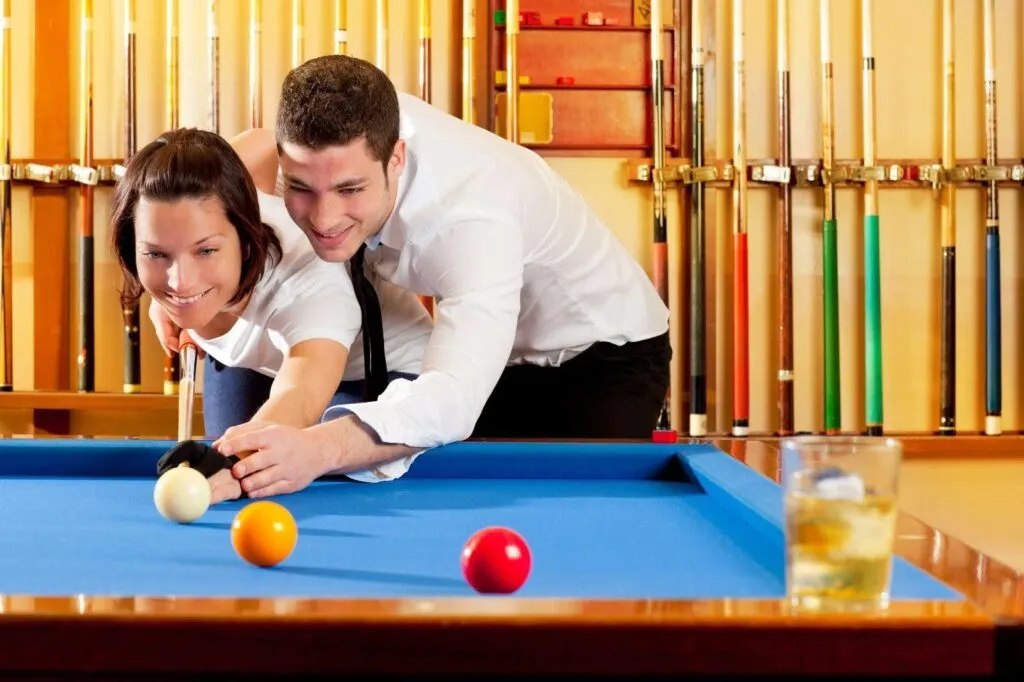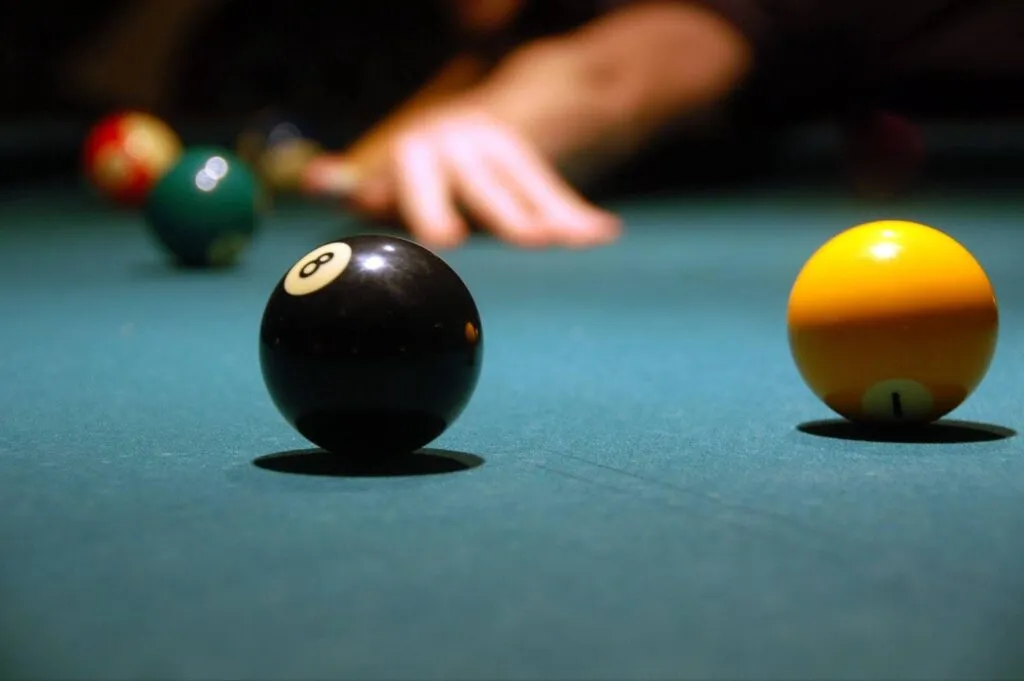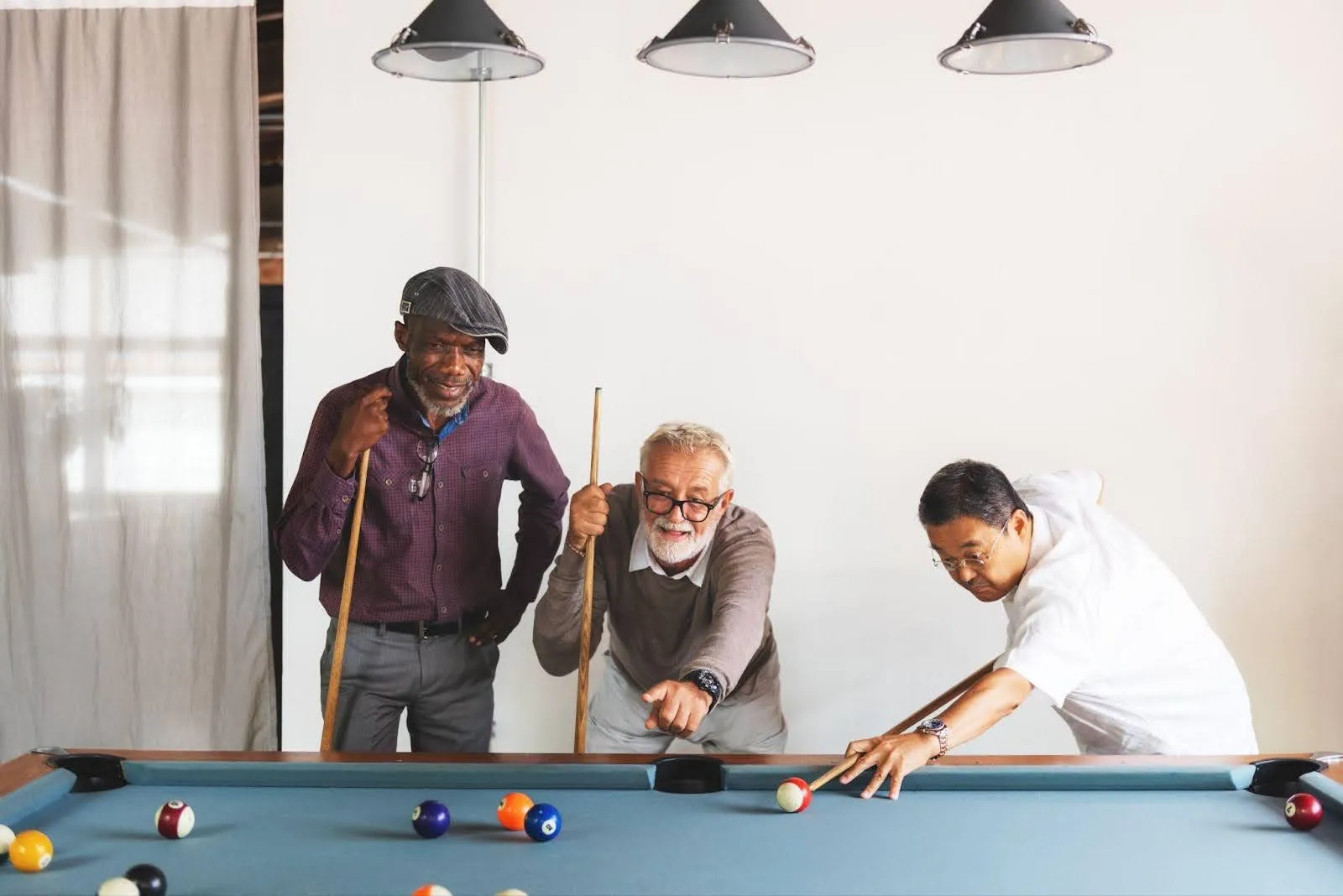Cue sports have captivated players and spectators for generations. They blend precision, strategy, and skill into fast-paced, mentally engaging games. Whether you’re watching a high-stakes tournament or enjoying a friendly match at your local billiards hall, these sports undeniably appeal to players and spectators alike.
From casual players to seasoned pros, millions of people around the world enjoy cue sports for their competitive nature and social atmosphere.
Among the many variations, three cue sports stand out for their distinct rules, unique playing surfaces, and dedicated fan bases: pool, snooker, and carom. While they all involve a cue stick, balls, and a felt-covered table, each offers a completely different experience shaped by culture, tradition, and technique.
In this blog, you’ll learn what differentiates these three popular games. We’ll explore the differences in table sizes, equipment, scoring, and strategy, giving you a clear understanding of how pool, snooker, and carom compare.
Whether you’re a beginner looking to pick up a cue or a longtime enthusiast curious about the nuances, this guide will help you appreciate each game’s unique characteristics.
Origins and history
Understanding the origins of cue sports provides valuable context for their differences and global appeal. Each game has a unique history shaped by cultural influences and evolving gameplay styles.
Pool
Pool has its roots in the United States and evolved from earlier European lawn games adapted for indoor play. Over time, pool became a staple in American recreation, especially during the 19th and 20th centuries.
Its popularity grew rapidly with the rise of pool halls, professional tournaments, and cinematic depictions that helped cement its image as a competitive and accessible sport.
Snooker
Snooker was developed in the late 1800s by British Army officers stationed in India. Seeking a new challenge, they combined pyramid and black pool elements, creating a more complex game that required strategic depth and scoring precision.
Snooker gained momentum in the United Kingdom and the Commonwealth, eventually becoming a professional sport with a devoted global following and televised championships.
Carom billiards
Carom billiards, often referred to simply as carom, is one of the oldest forms of cue sport. It originated in Europe and spread throughout Asia, earning strong popularity in countries like France, Japan, and South Korea.
Unlike pool and snooker, carom tables have no pockets, focusing entirely on cue ball control and shot accuracy. Its emphasis on angles and finesse appeals to players who enjoy calculated, cerebral gameplay.
Tracing their roots reveals how geography, innovation, and cultural preferences shaped pool, snooker, and carom into the distinct sports we know today.

Table and equipment differences
Each cue sport uses a distinct set of tables, balls, and cues tailored to its rules and style of play. These differences directly influence strategy, technique, and the game’s overall pace.
Tables
Table size plays a major role in how you approach each game. Pool tables typically measure 7, 8, or 9 feet in length, with the 9-foot version used in professional tournaments. Their manageable size makes pool more accessible for casual and competitive play alike.
Snooker tables are significantly larger, with a standard size of 12 feet by 6 feet. This extra surface area demands precision, powerful strokes, and thoughtful ball positioning.
Carom billiards tables measure 10 feet by 5 feet and are unique in one key aspect — they have no pockets. This design shifts the focus from potting balls to executing intricate rebound shots.
Pockets
Pockets are another defining feature. Both pool and snooker tables include six pockets — four at the corners and two at the sides. Players aim to sink balls into these pockets to score points.
In contrast, carom tables eliminate pockets altogether, requiring players to score by making the cue ball contact both object balls in a single shot. This difference dramatically alters gameplay, placing a premium on angles, spin, and control.
Balls
Balls vary in number, color, size, and purpose. Pool uses 16 balls: one cue ball and 15 object balls, which are either solids or stripes.
Players set up snooker with 22 balls, including one cue ball, 15 red balls, and six colored balls, which they must pot in a specific order to score maximum points.
Carom uses only three balls — one red and two cue balls, often differentiated by color or markings — making the game simpler in appearance but highly technical in execution.
Cues
Manufacturers design cues to match the unique demands of each cue sport. Players use shorter, thicker pool cues with larger tips to gain better control for power shots. In snooker, they rely on longer, thinner cues with smaller tips to execute precise, finesse-based plays. Carom players choose cues that strike a balance between the two, using them to deliver consistent contact and apply fine-tuned spin without relying on pocketed shots.
These equipment differences directly influence how players approach each game, affecting everything from shot selection to overall strategy. By understanding these distinctions, players can choose the sport that best fits their skills and preferences.
Rules, gameplay, and strategy
Cue sports may share a common foundation, but the rules, objectives, and strategic approaches of pool, snooker, and carom offer completely different experiences. Each format defines how players score points and sets the rhythm of the game, bringing its own style and skillset to the table.
Pool: Fast-paced and tactical
Pool features multiple variations, with 8-ball and 9-ball being the most popular. In 8-ball, players aim to pocket either solids or stripes and then sink the 8-ball to win. In 9-ball, the balls must be pocketed in numerical order, ending with the 9-ball.
The rules are easy to learn, and turns alternate until a player misses or commits a foul. This creates a quick tempo that rewards sharp shot-making and efficient cue ball control.
Strategy in pool often focuses on offensive momentum — running the table, setting up combinations, and controlling the break. More advanced players use safety shots and positioning techniques to limit the opponent’s options. Whether played casually in a bar or competitively in a tournament, pool strikes a balance between action and decision-making.
Snooker: Deliberate and deeply strategic
Snooker challenges players with its complex rules and slower pace. To win, players must outscore their opponent by pocketing balls in a specific sequence. They take turns sinking red balls and colored balls, each worth different point values. After potting all the reds, they must clear the colored balls in order from lowest to highest.
This scoring system requires sharp precision and careful planning. Each shot needs to earn points while setting up the next move. Even minor errors can shift control of the table. Players use safety shots, strategic cue ball placement, and long-term thinking to stay ahead. Snooker rewards those who stay patient, think critically, and master both angles and opportunities.
Carom: Precision without pockets
Carom billiards stands apart by eliminating pockets altogether. Players use three balls and score points by striking both object balls with their cue ball in a single shot. Each successful carom allows the player to continue shooting, creating the potential for long scoring streaks.
With no pocketing involved, carom becomes a test of geometry, spin, and finesse. Players must judge distances and rebound angles with exactness, often using cushions to redirect the cue ball.
Strategy centers on creating favorable positions for follow-up shots while maintaining control of the entire table. Carom appeals to those who enjoy calculated play and mastering cue ball dynamics.
Choosing your cue sport
Although the equipment may look similar, the feel and flow of each cue sport vary widely. Pool offers an energetic pace and versatile gameplay. Snooker introduces depth, scoring complexity, and thoughtful execution. Carom challenges players to think like physicists, solving spatial puzzles with every shot.
Understanding these differences helps players and fans appreciate the unique appeal of each game. Whether you prefer quick, action-oriented play or a slower, more cerebral challenge, cue sports offer something for every style and skill level.
Give cue sports a shot at Skinny Dogz

If you’re ready to try these cue sports for yourself, there’s no better place to start than Skinny Dogz. With high-quality tables, a welcoming atmosphere, and something for players of every experience level, Skinny Dogz is the perfect spot to sharpen your skills, challenge your friends, or simply have a great time.
Visit Skinny Dogz and experience the difference for yourself. Your next favorite game might be one shot away.



